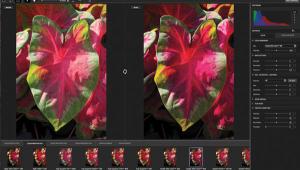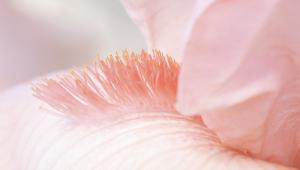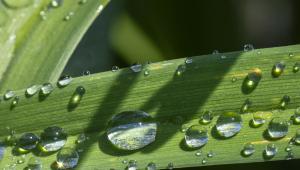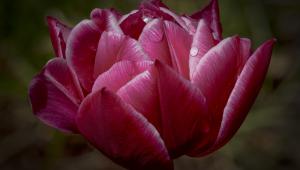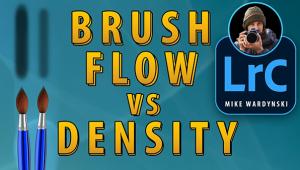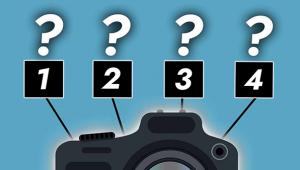Digital In Black And White
The Status Of Ink Jet B&W Printing In 2005
All Photos © 2004, David B. Brooks, All Rights Reserved
The December 2001 issue of Shutterbug I reported on my trials and experiments with different methods of printing black and white photographs with ink jet printers. Today the challenge to a photographer using a digital darkroom who wants to do black and white prints remains similar to what it was three years ago. The fact remains that all of the most popular ink jet printers available made to reproduce photo-realistic prints are still dedicated to color printing. So, for most who want to make an occasional print of a black and white photograph you are asking the printer to adapt to something for which it was not expressly designed. I get numerous e-mails from readers complaining that the black and white images they print have a pronounced and undesirable color cast. With some new ink jet printers I have tested recently improvements in their ability to reproduce color using ever more different colors of ink producing very high color fidelity to the subject has in fact made their capacity to reproduce neutral gray black and white prints worse.
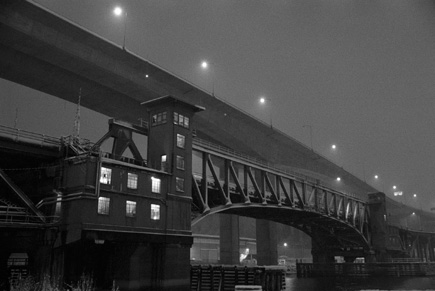 |
|
|
Also, during that same period, Epson introduced new pigment inks for use with
some of their printers, largely resolving the problem of dye-ink fading and
a quite limited print life. But this great advantage brought with it another
complication which is a particular problem to monochrome prints made with color
pigment inks--metamerism. This is a long known and understood characteristic
of pigment images to change in color quite noticeably when illuminated by different
kinds of light sources, like between tungsten indoor lighting and illumination
by daylight from a window. This was noticeable to a high degree in color prints
made with the first Epson pigment-ink Stylus Photo 2000P; it was even more perceptually
obvious in black and white prints made with that printer.
So now, with an even greater array of problems printing black and white images
with color ink jet printers than when I last surveyed black and white options
for printing, the challenge is, if anything, more urgent. Despite this, the
photo ink jet printer industry has not responded by offering a printer model
that is a solution. I should, however, give Epson credit for trying to make
the Stylus Pro 4000 printer, which I reported on recently, function with a much
more accurate and reliable neutral gray balance that pretty well eliminated
the color casts that plague many other printers when used to reproduce black
and white. Unfortunately because the UltraChrome inks for the 4000 are pigment
based, metamerismic color shifts of a black and white print made with the printer
are unacceptable beyond a very limited range of light sources used for print
illumination.
Although it is a disappointment, I cannot report that any of the big three ink
jet printer makers are offering an out of the box, fully satisfactory solution
for black and white photographers who want to make photo-realistic ink jet prints.
But there has been much progress made by independent suppliers of products that
can be used to convert an ink jet printer to dedicated black and white printing.
These products can be divided into three primary categories, including ink,
software, and of course paper, which is shared with color printing "more
or less." There is a considerable range of black and white dedicated printer
conversion options from really easy and inexpensive ones to those with greater
degrees of sophistication that are largely associated with more expensive professional
printers, or users who are more technically competent with computing and who
are also intensely dedicated to getting it right.
I'll identify and describe the latter options at the end of my report,
but will first of all describe an easy and affordable way I chose to test what
is possible. I chose one option after reviewing all of the information available
and consulting with several expert insiders involved in black and white digital
ink jet printing.
 |
|
|
An Easy And Affordable Way To Make Very Good Quality Digital B&W
Prints
I share with you many of the same limitations in terms of budget so I first
looked for an affordable solution. In my case that meant utilizing a printer
I already have in my possession, but that is no longer used because it's
obsolete--the Epson Stylus Photo 2000P. So I scoured all of the resources
for black and white printing to find support for the 2000P. In so doing I also
contacted some of the people involved in the ink jet printing supply industry
to obtain some ideas as to the most affordable and the most effective choices
I could make. Although several black and white ink vendors provide support for
the 2000P, all but one involved the necessity of investing substantially in
software to be able to use the inks to effectively control the printer in how
it applied the ink. That left just one ink supplier, MIS Associates (www.inksupply.com)
that also featured a freeware printer control software solution through www.paulroark.com.
Here, if I may digress, I also limited my choices to those black and white ink
options which are entirely monochrome black. All of the black inks for black
and white photo ink jet printing that I considered are pigment-based inks. In
the three years since I was last involved in dedicated black and white printing,
there have been several new ink sets (with necessary software) offered which
provide the ability to reproduce a controllable range of monochrome tones from
sepia (warm) to a bluish-cold tone. I did not consider these options 1) to keep
the software support needed as simple as possible, and 2) because of the problem
with metamerism. This is caused chiefly by the use of colored pigments in making
a monochrome print, so why re-introduce that potential problem? To be candid,
in my wet darkroom days I never used toning to change black and white print
color tone, save the use of a mild selenium bath to promote print longevity.
Upon visiting the paulroark.com website I discovered the man responsible for
the freeware solutions lives just a few miles from me, so I sent him an e-mail
introducing myself and the fact I was researching black and white printing for
an article for Shutterbug. A meeting came about shortly which soon progressed
into somewhat of a collaboration, with Paul Roark doing most of the significant
work, I must admit.
At the outset of this project Roark and MIS Associates did not have support
for the easiest way to work with the 2000P, with pre-filled ink cartridges and
the Photoshop curve files to control the particular UltraTone FS ink I wanted
to use. (The MIS Associates UT-FS ink is based on pure carbon pigment, which
reproduces as a warm black.) But after putting the 2000P I had in Roark's
hands, and shortly also an Epson Stylus Photo 1270 I had that was also surplus,
in addition to a 1280 Roark had, the entire family of similar Epson 13"
printers that use the same basic ink cartridge (the 2000P has a different cartridge
chip) are now supported to use MIS UT-FS inks on his website. As this goes to
press MIS Associates is in the process of having cartridges filled with UT-FS
available from their website.
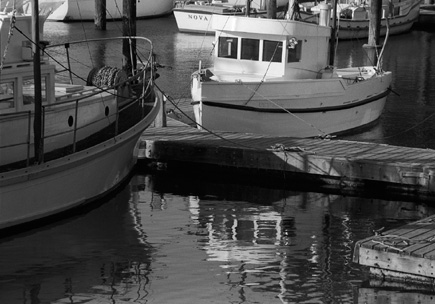 |
|
|
As Roark worked on the software, which involved making Photoshop Curve .ACV
files to linearize (see sidebar at end of the article) ink performance for each
printer, I used the printers he had completed to make a bunch of test prints
on different papers to evaluate the practical results of using both the software
and the MIS UT-FS ink. Here I found that the MIS pigment black ink responds
a bit differently on various paper stocks compared to the Epson color pigment
or dye ink sets. This may be in part due to the perceptual quality difference
between black and white and color, but also because the Epson pigments are coated
and the MIS pigment, like most offered for monochrome black and white printing,
are made with uncoated pigment.
I found that some fiber-based matte papers, which are preferred by most serious
black and white printers for their archival qualities, reproduce well, but some
did not reproduce a satisfactory maximum ink density. Epson's Enhanced
Matte, although not an archival product, reproduced good black and white images
with the MIS UT-FS inks, while two of the 100 percent rag papers I've
used successfully with color recently, Moab Paper's Entrada Natural (www.inkjetgoodies.com)
and PremierArt Hot Press Fine Art Paper by Premier Imaging Products (www.inkjet
art.com/premier/), produced optimum print results with a wide range of black
and white photo subjects.
The easiest and most affordable solution described here came to my attention
thanks to Roark's work. He identified the fact that MIS Associates has
UltraTone all-black pigment-based ink cartridges for the Epson Stylus C82, C84,
and C86 printers, which function with the Epson driver and print from any software
application that supports black and white photographic images. This provides
a direct means for printing black and white images with all-black ink that is
archival and to make prints up to letter-size with a printer that costs less
than $100. For anyone who wants to begin printing fine quality black and white
prints in an inexpensive and easy way this option should be taken very seriously.
A description of this Epson C82, C84, and C86 black and white ink option can
be found at: www.inksupply.com/index.cfm?source=html/bwpage.html.
- Log in or register to post comments
